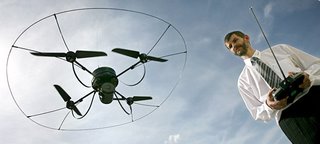I'm amused by the controversy surrounding the Spanish-language version of "The Star-Spangled Banner." But then such things have always caused
controversy:
In 1944, a version of the anthem reharmonized and orchestrated by Stravinsky (a dutifully patriotic act by the Russian emigre composer) got banned in Boston. Stravinsky's modernist retouchings ran afoul of Massachusetts law, and after the first performance, which left the audience "stunned into bewildered silence," Boston cops showed up at a later concert to make sure he didn't repeat the offense.
"Let him change it just once and we'll grab him," a Capt. Thomas Harvey told a Boston newspaper. According to musicologist Michael Steinberg, at some point Boston cops seized the music.
Stravinsky was into atonal (12-tone) music at the time, so it's hard not to sympathize with the Boston cops, if only on an aesthetic level. Others have expressed revulsion at Jimi Hendrix's electric guitar rendition.
Still, you can't beat the 1943
Yiddish translation of "The Star-Spangled Banner," by Dr. Abraham Asen ("the foremost Yiddish adapter of English poetry"), and proudly presented in commemoration of the one hundred anniversary of the death of Francis Scott Key:
O'zog, kenstu sehn, wen bagin licht dervacht,
Vos mir hoben bagrist in farnachtigen glihen?
Die shtreifen un shtern, durch shreklicher nacht,
Oif festung zich hoiben galant un zich tsein?
Yeder blitz fun rocket, yeder knal fun kanon,
Hot bawizen durch nacht: az mir halten die Fohn!
O, zog, tzi der "Star Spangled Banner" flatert in roim,
Ueber land fun die freie, fun brave die heim!
And lest we forget, Key adapted the music of "The Star-Spangled Banner" from an English drinking song called
"To Anacreon in Heaven."Ye sons of ANACREON, then, join Hand in Hand;
Preserve Unanimity, Friendship, and Love!
'Tis your's to support what's so happily plann'd;
You've the Sanction of Gods, and the FIAT of Jove.
While thus we agree
Our Toast let it be.
May our club flourish happy, united and free!
And long may the Sons of ANACREON intwine
The Myrtle of VENUS with BACCUS'S Vine.
Slainte!
Other translations can be found
here.





